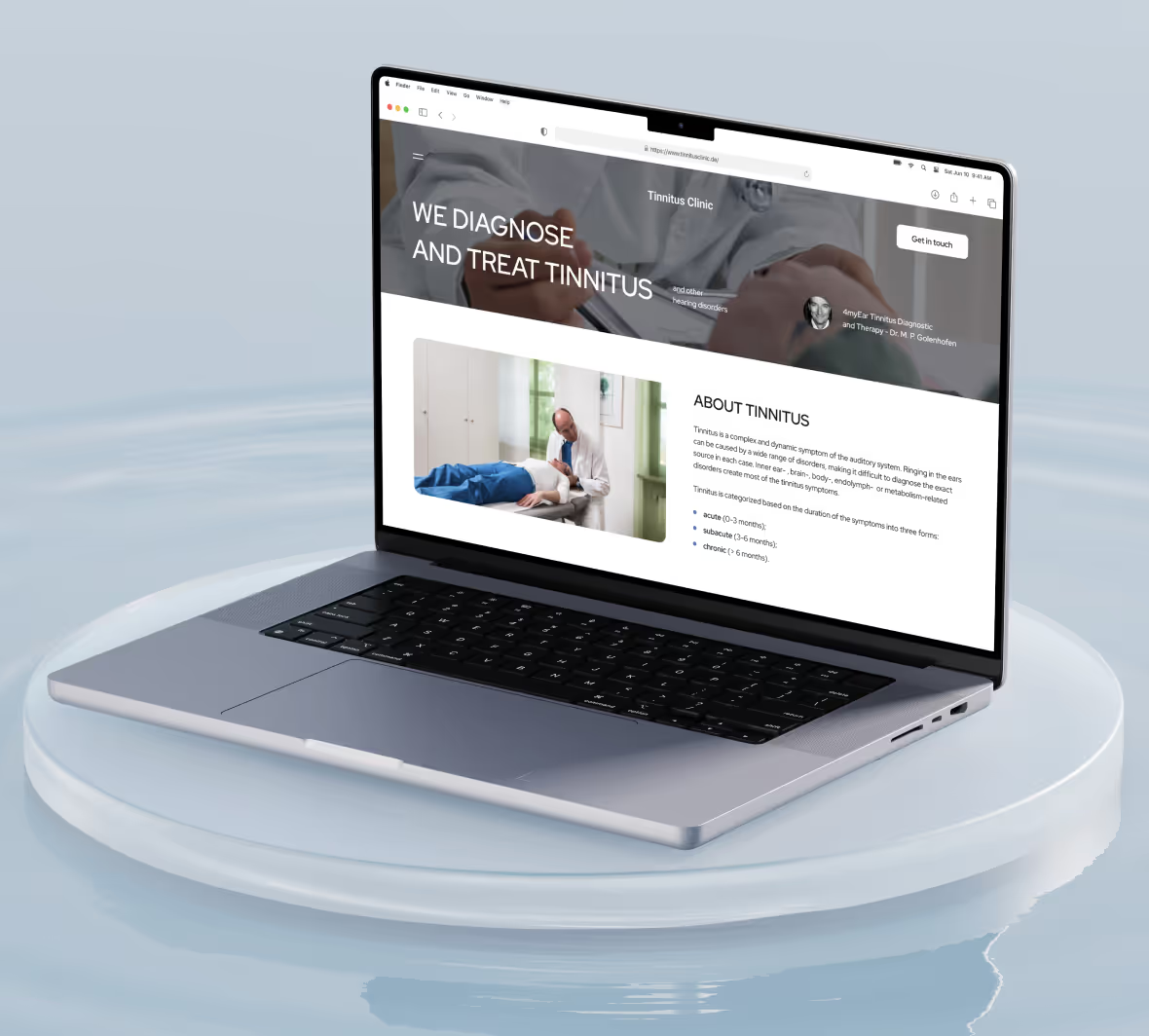
Als je de intentie hebt om een B2B SaaS product, een op maat gemaakte interne tool, mobiele applicaties of een andere web app te ontwikkelen, kan het gebruik van een no-code platform zoals Bubble een aanzienlijke tijd- en kostenbesparing opleveren ten opzichte van traditionele codeermethodes. Toch is het gebruik van no-code tools zoals Bubble geen toverformule - het ontwikkelen van professionele toepassingen vereist nog steeds doordacht product-denken, goede UX en een solide ontwikkelstructuur.
Precies om die reden biedt een Bubble ontwikkelingsbureau een oplossing voor hun klanten.
In dit artikel wordt uitgelegd wat een goed Bubble ontwikkelingsbureau precies doet, hoe ze echte mondiale problemen aanpakken, wanneer het zinvol is om met hun samen te werken en waar je op moet letten.
Waarom kiezen voor een Bubble ontwikkelingsbureau?
Je neemt geen Bubble bureau in dienst om elementen op een canvas te plaatsen. Je schakelt ze in om een echt product te ontwikkelen - snel en zonder compromissen te sluiten, zodat jij je kunt focussen op het echte ondernemen.
Een degelijk bureau brengt structuur, ervaring en product-denken om doeltreffend aan je zakelijke behoeften te voldoen. Ze helpen je door verschillende diensten te leveren:
- basisideeën omzetten in overzichtelijke functies en flows
- iets ontwerpen dat gebruikers echt begrijpen en gebruiksvriendelijk is
- bouwen op een schaalbare manier, die veilig is en eenvoudig kan worden bijgewerkt
- veelvoorkomende problemen vermijden (slechte gegevensstructuur, slechte UX, spaghetti-workflows)
Bubble is flexibel, maar die flexibiliteit kan nadelig uitpakken als het zonder ervaring wordt gebruikt. Een solide bureau kan het maximale uit het platform halen door de juiste plug-ins te gebruiken, een prestatiegerichte architectuur op te zetten en zowel mobiele apps als webapps te ontwikkelen met het oog op toekomstige veranderingen.
En als je zelf geen technische kennis hebt, is een team dat “product” en “Bubble” beheerst een enorme tijdsbesparing.
De opbouw van het ontwikkelproces
Elk bureau zegt dat ze “snel bouwen”, maar snel handelen zonder structuur resulteert in onoverzichtelijke producten. Een solide Bubble bureau werkt in overzichtelijke, herhaalbare fases - waardoor het proces op schema blijft.
Hieronder staat hoe een standaard proces eruit ziet:
- Verkennende fase – Omschrijf wat je bouwt, het doelpubliek en het beoogde succes. Dit omvat verhalen van gebruikers, functielijsten en een basis stappenplan.
- Ontwerp – In Figma of meteen in Bubble. De doelstelling is om ervoor te zorgen dat je app gebruiksvriendelijk en visueel consistent is - zelfs als het merk nog niet volledig is uitgewerkt.
- Ontwikkeling – Het bouwen van de daadwerkelijke workflows, pagina's, logica en database. In dit stadium kan het team externe tools inschakelen (bijv. Xano, API's of Make) om in te spelen op aspecten die Bubble zelf niet goed kan.
- Testfase – Handmatige QA, edge cases, gebruikerstesten, apparaat controles. Een goed bureau stuurt geen bugs naar je gebruikers.
- Lancering + ondersteuning – Live implementeren en de app up-to-date houden. Ondersteuning omvat meestal het oplossen van bugs, kleine updates en hulp bij problemen op het gebied van schaling of prestaties.
Bureaus die in agile sprints werken (1-2 weken) hebben de mogelijkheid om zich snel aan te passen - wat handig is als je bereik verschuift na feedback van gebruikers of input van investeerders.
Bovendien is het belangrijk dat alle documentatie op orde is. Als het bureau wegvalt, wil je niet achterblijven met een app die niemand begrijpt.
Is Bubble de juiste tool om innovatieve mobiele en webapps te bouwen?
Bubble is voornamelijk gekend voor webapps, maar het ondersteunt nu ook het bouwen van native mobiele apps - rechtstreeks in Bubble, zonder beroep te doen op wrappers van derden. Deze functie is momenteel nog in bèta, maar het is een enorme stap voorwaarts voor teams die Bubble apps willen leveren voor iOS en Android apps met hetzelfde no-code platform.
Bubble wordt door bedrijven ingeschakeld om allerlei producten te bouwen, waaronder:
- SaaS-platforms met dashboards, abonnementen en functies
- Tweezijdige marktplaatsen
- Interne tools en CRM's
- Op AI-gebaseerde apps (verbonden met OpenAI, Replicate, etc.)
- Klantportalen en onboarding-flows
- Mobiele apps met pushmeldingen en native gebaren (met de nieuwe native engine)
Zaken waar Bubble nog niet in uitblinkt: super complexe animaties, apps die veel van je GPU vragen (zoals realtime games) of het verwerken van grote hoeveelheden media. Maar voor 80% van de zakelijke en producttoepassingen, inclusief geavanceerde apps, werkt Bubble uitstekend. Begin dus vandaag nog met het bouwen van je Bubble app :-)
Echte voorbeelden zijn:
- Een AI-aangedreven vacatureplatform dat door voorfinanciering uitgroeide tot 10.000 gebruikers
- Een mobielvriendelijke healthtech app die in minder dan 12 weken is gebouwd en beschikbaar is in app stores
- Een SaaS-dashboard dat door meer dan 50 klanten wordt gebruikt en Stripe, Postmark en HubSpot integreert
Als je een product snel op de markt wilt brengen en flexibel wilt blijven, zeker voordat je in een volledig ontwikkelteam investeert, is dit een super logische keuze.
Knowhow over no-code platforms
No-code betekent niet dat je geen kennis hebt. Een goed Bubble bureau heeft meer dan alleen kennis van het platform – ze hebben productinzicht, een slimme opzet en een solide proces.
Dit is wat een goed bureau zou moeten kunnen:
- Bouwen met structuur – Het opzetten van databases, workflows en toegangsrechten zijn vaak waar het misgaat bij doe-het-zelf projecten. Bureaus weten hoe ze apps moeten structureren, zodat ze later niet lastig te beheren zijn.
- Werken als een productteam – Het zijn niet alleen ontwikkelaars. Je werkt meestal samen met iemand die de reikwijdte van het product bepaalt, een ontwerper die de limieten van Bubble kent en een QA-manager die problemen opmerkt voordat je gebruikers ze opmerken.
- Optimaliseren voor prestaties en schaalbaarheid – Ze kunnen langzaam ladende pagina's voorkomen, omgaan met groei van het aantal gebruikers en zich voorbereiden op toekomstige functieveranderingen.
- Altijd up-to-date met het platform – Bubble verandert snel. Bureaus gebruiken de nieuwste functies (zoals server-side acties of conditie gebaseerde logica) op de juiste manier en vermijden hacks die na een update niet meer werken.
Nog iets om te onthouden: Bubble alleen is misschien niet voldoende. Bureaus combineren het vaak met tools zoals Xano (voor backend/API-logica), Make.com of n8n (voor automatisering) of op maat gemaakte code waar dat nodig is. Die mix zorgt voor snelheid en flexibiliteit

Welke aanpak gebruiken Bubble bureaus voor beveiliging, schaalbaarheid en prestaties?
Dit zijn belangrijke vragen voor klanten, vooral als je met gebruikersgegevens werkt of van plan bent om uit te breiden. Een goed Bubble bureau regelt dit als volgt:
- Beveiliging: Bubble draait op AWS met een infrastructuur van topkwaliteit, maar je moet nog steeds dingen zoals privacyregels, snelheidsbeperkingen en veilige workflows goed instellen.
- Schaalbaarheid: Bubble is geschikt voor duizenden gebruikers, maar de prestaties hangen af van hoe je het opzet. Bureaus met ervaring weten hoe ze je database en logica moeten structureren om vertragingen te voorkomen.
- Conformiteit: GDPR, SOC2, HIPAA – deze kunnen worden ondersteund met de juiste architectuur. Vraag het bureau hoe ze in eerdere projecten met conformiteit zijn omgegaan.
Als je bouwt voor schaalbaarheid of in een gereguleerde sector, werk dan niet samen met een bureau dat deze vragen wegwuift, ongeacht de complexiteit van het project.
Voortdurende ondersteuning en onderhoud
Het lanceren van de app betekent niet dat het project is afgerond – het is het begin van het echte gebruiksproces. Een goed Bubble bureau blijft na de lancering betrokken om alles in goede banen te leiden en biedt voortdurende ondersteuning bij de ontwikkeling van de app.
Je kunt hulp verwachten bij:
- het oplossen van bugs die na de lancering optreden
- het aanpakken van prestatieproblemen als het gebruik toeneemt
- het toevoegen van nieuwe functies op basis van feedback van gebruikers
- het updaten van integraties van derden als API's veranderen
- het zorgen dat privacyregels en gegevensverwerking in orde blijven
Sommige bureaus werken met een vast bedrag per maand, andere werken per opdracht. Hoe dan ook, vergeet de ondersteuning niet — apps die niet worden onderhouden, ondervinden sneller problemen dan je denkt.
Hoe de beste Bubble ontwikkelaars vinden
Als je iets degelijks wilt bouwen, is het belangrijk om met ervaren bouwers te werken, vooral als je een beperkt budget hebt. De leercurve van Bubble is niet zo steil, maar het bouwen van iets stabiels, veiligs en schaalbaars is nog steeds lastig.
Je hebt twee opties:
- Freelancers direct inhuren (goedkoop maar onzeker)
- Samenwerken met een bureau dat het team voor je screent en beheert
De meeste topbureaus hebben interne wervingsprocessen, code reviews en kwaliteitscontroles. Ze zetten niet zomaar een junior freelancer op je project.
Als je voor freelancers kiest, zoek dan naar Bubble ontwikkelaars die het volgende kunnen bieden:
- live apps die ze reeds hebben gebouwd
- degelijke kennis van datastructuren en workflows
- duidelijk kunnen communiceren over de voor- en nadelen van producten
- bonus: ervaring met tools zoals Xano, Make of native mobile builds
Valkuilen om te vermijden
Niet alle bureaus zijn even goed. Let op het volgende:
- Geen proces – “We maken wat je ons vraagt” is een slecht voorteken. Ze moeten je begeleiden.
- Geen echte apps kunnen tonen – Vraag om live voorbeelden, niet alleen screenshots.
- Vermomde freelancer-marktplaatsen – Sommige “bureaus” zijn gewoon verzamelplaatsen van freelancers die niet zijn gescreend. Dit leidt meestal tot wisselende kwaliteit.
- Loze beloftes – Als ze overal ja op zeggen zonder details te vragen, pas dan op. De beste bureaus luisteren en stellen veel vragen tijdens de eerste gesprekken.
Je wilt mensen die je uitdagen als dat nodig is, je ideeën in twijfel trekken en zich richten op resultaten, niet alleen op functies.
Oplossingen op maat voor elk bedrijf
Bubble is geen standaard tool. De flexibiliteit is zowel een voordeel als een risico. Daarom is het belangrijk om samen te werken met een bureau dat je specifieke wensen begrijpt.
Een goed Bubble bureau bouwt niet alleen wat je vraagt, maar helpt je ook te ontdekken wat echt zinvol is voor je bedrijf. Of je nu een B2B SaaS-product lanceert, een interne tool bouwt of een proces automatiseert, zij passen de technologie aan je specifieke wensen aan.
Enkele voorbeelden van wat bureaus doorgaans bouwen met Bubble:
- CRM's en dashboards
- SaaS-platforms met abonnementen en gebruikersfuncties
- Tweezijdige marktplaatsen
- Interne tools voor logistiek, HR, financiën
- MVP's voor vroege validatie (die later niet opnieuw hoeven te worden gebouwd)
Ze helpen je ook uitzoeken wat je niet in Bubble moet doen en wanneer je andere tools moet gebruiken. Bijvoorbeeld: Bubble gebruiken voor de front-end, maar Xano of Firebase voor complexe backend logica, of Make.com voor workflows die niet binnen je app moeten draaien. Dit soort beslissingen zijn cruciaal voor het succes van een schaalbaar product
Hoeveel kost het?
De prijzen variëren afhankelijk van de omvang en de regio. Over het algemeen geldt:
- Kleine MVP's: € 5.000–€ 15.000
- Middelgrote apps: € 15.000–€ 50.000
- Tools voor ondernemingen/intern gebruik: € 50.000+
Dit zijn ruwe schattingen – een goed bureau biedt vaste pakketten of in ieder geval duidelijke schattingen op basis van wat er geleverd wordt, en geen onduidelijke uurtarieven.
Welke ondersteuning kun je verwachten na de lancering?
Ondersteuning na de lancering is belangrijk. Je kunt hulp verwachten bij:
- het oplossen van bugs
- het toevoegen van nieuwe functies
- het monitoren van prestaties
- het opschalen of verplaatsen van delen van je stack (bijvoorbeeld het verplaatsen van backend-logica naar Xano)
Controleer of ondersteuning bij het project is inbegrepen of apart wordt aangerekend. Hoe dan ook, sla dit niet over — de lancering is nog maar het begin.
De toekomst van no-code ontwikkeling
No-code is geen trend meer, maar een verschuiving in hoe software wordt gebouwd.
Steeds meer teams gebruiken tools zoals Bubble om sneller te werken, ontwikkelingskosten te verlagen en te bouwen zonder te wachten op engineers. Naarmate platforms beter worden (en meer geïntegreerd met AI), zal de drempel om aangepaste software te bouwen steeds lager worden.
Realistische voorspellingen:
- Meer bedrijven gaan MVP's lanceren zonder code te schrijven voor ze een volledig team aannemen
- Technische oprichters gaan code gebruiken om ideeën te testen en te verbeteren
- Bureaus gaan hybride stacks gebruiken (Bubble + aangepaste code + externe API's)
- Teams gaan meer doen met “product + activiteiten” functies, zodat ze intern kunnen bouwen en leveren
Als je snel een product wilt ontwikkelen en testen met gebruikers, is 'no-code' niet langer een noodoplossing, maar vaak de slimste eerste stap.

Besluit
Een goed Bubble ontwikkelingsbureau schrijft niet alleen workflows, maar helpt je ook met de ontwikkeling van apps om een echt product te bouwen.
Mensen die een startup beginnen, onderschatten vaak hoeveel strategie, UX, planning van gebruikersstromen en besluitvorming er komt kijken bij een werkende app. Als je impasses wilt voorkomen en snel wilt gaan zonder compromissen te sluiten, is het de moeite waard om samen te werken met een team dat dit al eerder heeft gedaan
Stel vragen. Bekijk echte projecten. En kies een partner met ervaring en die echt begrijpt wat je aan het bouwen bent.
Veelgestelde vragen
Wat zijn de voordelen van een samenwerking met een Bubble ontwikkelingsbureau?
Je kiest voor een team dat weet hoe het snel moet werken, zonder belangrijke details zoals UX, prestaties of beveiliging over het hoofd te zien. Het gaat niet alleen om sneller bouwen, maar ook om fouten te vermijden die je later tijd en geld kosten.
Hoe zorgen bureaus ervoor dat de app ook echt goed functioneert?
Ervaren bureaus hebben een duidelijk proces voor projectmanagement: ze testen terwijl ze bouwen, vangen problemen vroeg op en leveren niet zomaar een half afgewerkt product af. Zoek naar teams die zich bezighouden met kwaliteitscontrole, productontwikkeling en ontwerp, en niet alleen met de technische kant van het bouwen.
Is Bubble een goede keuze voor grote of complexe apps?
Ja, als het goed wordt gebruikt. Bubble is solide voor B2B SaaS, marktplaatsen, CRM's en interne tools. Het platform kan schaalbaarheid aan, maar je hebt iemand nodig die weet hoe je moet bouwen met het oog op prestaties en veiligheid, vooral voor grote ondernemingen.
Wat gebeurt er nadat de app is gelanceerd
Goede bureaus verdwijnen niet na de lancering. Je mag doorlopende ondersteuning verwachten, zoals het oplossen van bugs, updates van functies, hulp bij schaalbaarheid en ervoor zorgen dat de app probleemloos blijft werken naarmate je bedrijf groeit.
Is no-code slechts een trend of blijft het bestaan?
No-code is al een gangbare praktijk in de wereld van webontwikkeling. Steeds meer teams gebruiken het om sneller te kunnen leveren en minder afhankelijk te zijn van grote ontwikkelteams. Nu AI en automatisering steeds beter worden, zal het bouwen van no-code apps zonder traditionele codering alleen maar toenemen.

Klaar om je product te bouwen?






.avif)


.png)